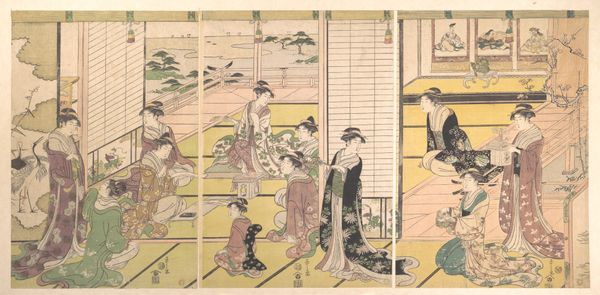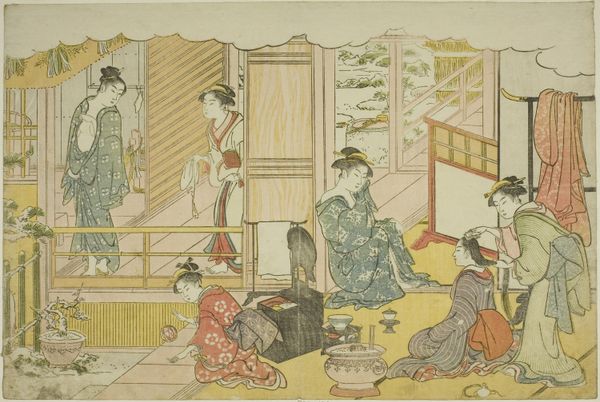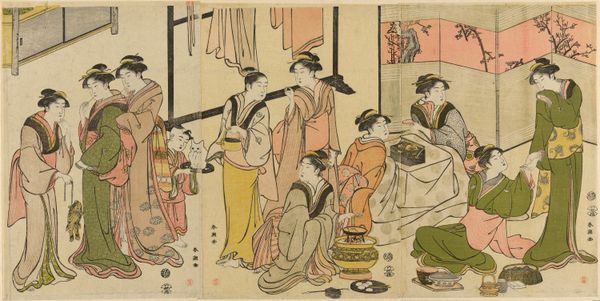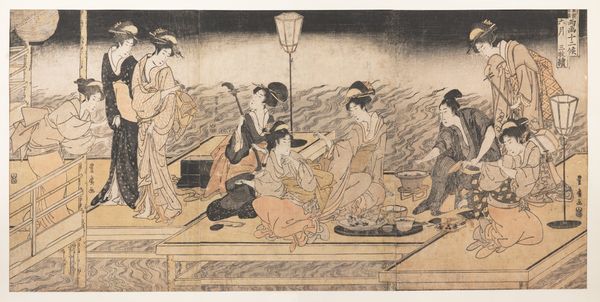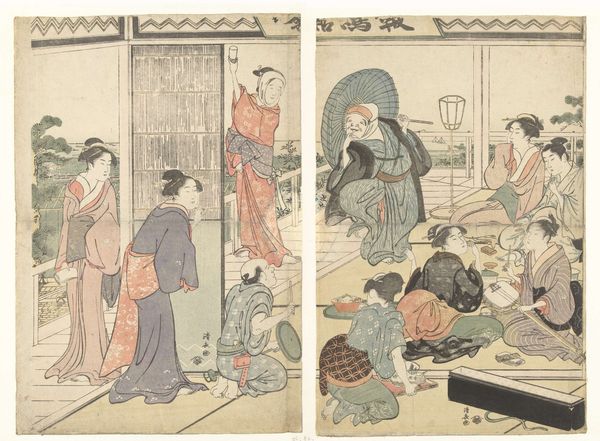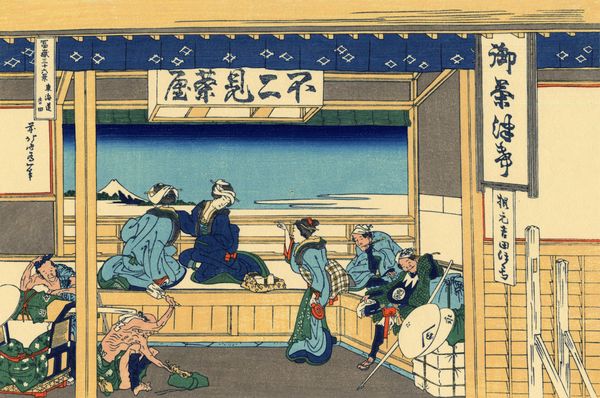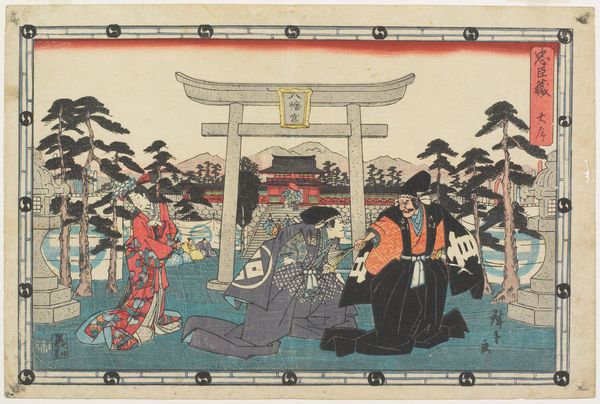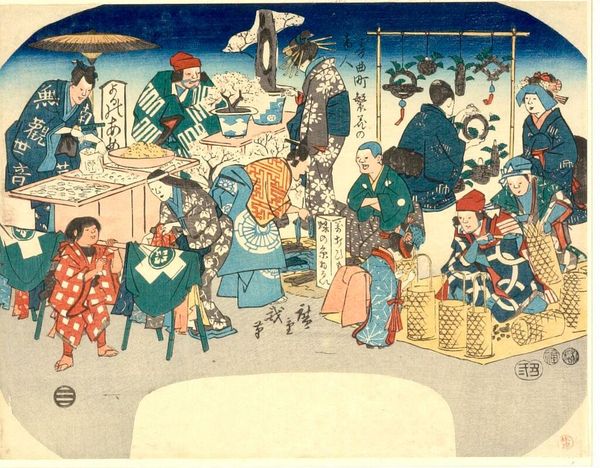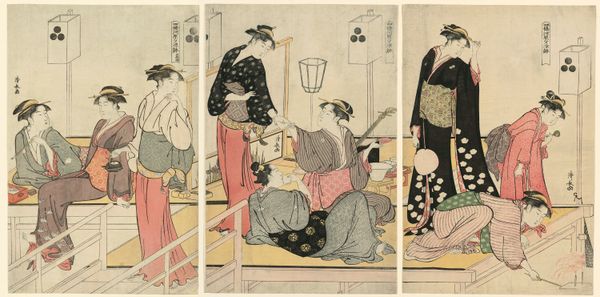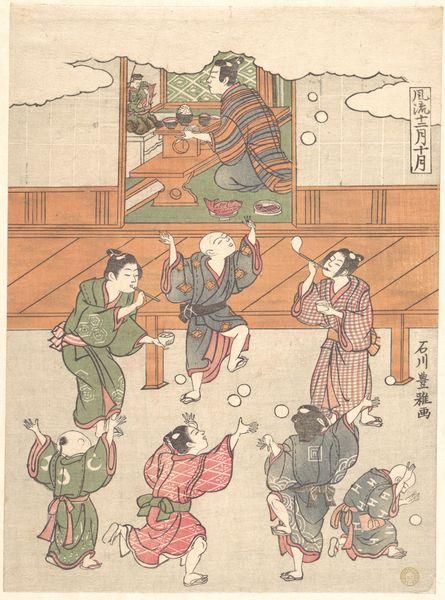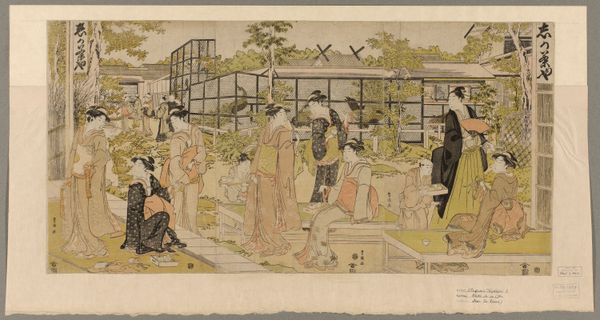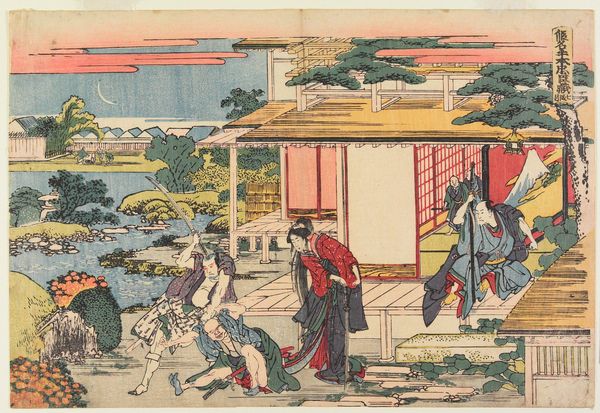
The Ceremonial Sake (Konrei sakazuki), the fourth sheet of the series "Marriage in Brocade Prints, the Carriage of the Virtuous Woman (Konrei nishiki misao-guruma)" c. 1769
0:00
0:00
print, woodblock-print
# print
#
asian-art
#
ukiyo-e
#
figuration
#
woodblock-print
#
genre-painting
Dimensions: 7 7/8 × 11 in.
Copyright: Public Domain
Curator: This woodblock print by Suzuki Harunobu, circa 1769, is entitled "The Ceremonial Sake, the fourth sheet of the series 'Marriage in Brocade Prints, the Carriage of the Virtuous Woman.'" It's currently housed at The Art Institute of Chicago. What's your initial take? Editor: It feels incredibly intimate, a captured moment in time. There's a soft, almost dreamlike quality to the light, even though the scene itself seems quite formal. Like stepping into someone's memory. Curator: Indeed. Consider the production process itself: Ukiyo-e prints like these involved a collaborative system, where the artist's design was carved onto woodblocks by skilled artisans and printed by specialized printers. Each line and color required a separate block. Editor: That's astounding to think about the layers of labour! And each element from the placement of figures to the careful detailing on their garments… What a beautiful accumulation of time. The women’s robes in particular seem almost tactile despite being rendered in such a delicate manner. Curator: The composition emphasizes the social rituals surrounding marriage in Edo-period Japan. Note the emphasis on sake, a potent symbol of bonding and commitment, shared communally among those gathered here. What do you think these ceremonial acts represent for them? Editor: For me, it suggests a joining of destinies. They’re building not just a marriage, but weaving a whole tapestry of community around it. Each shared cup, each respectful bow seems to reinforce their dedication to supporting the union. I imagine all those layers are infused into the material of that space. Curator: It does provoke the notion of ritual as reinforcing communal social contracts and duties and this one certainly involved an intricate web of societal relationships represented within a single frame. Editor: Right and by exploring that weaving in those quiet details, Harunobu makes that tangible for us centuries later, creating a potent conversation that still holds today. The image offers not merely visual information but rather it echoes our most deeply-felt emotional states, like the bonds with others which form one's social existence. Curator: Exactly. Analyzing the artwork through such historical and material means provides crucial insight that transforms the appreciation. Editor: Agreed! Experiencing "The Ceremonial Sake" isn't simply viewing a quaint depiction but encountering history through palpable emotion and material memory.
Comments
No comments
Be the first to comment and join the conversation on the ultimate creative platform.

